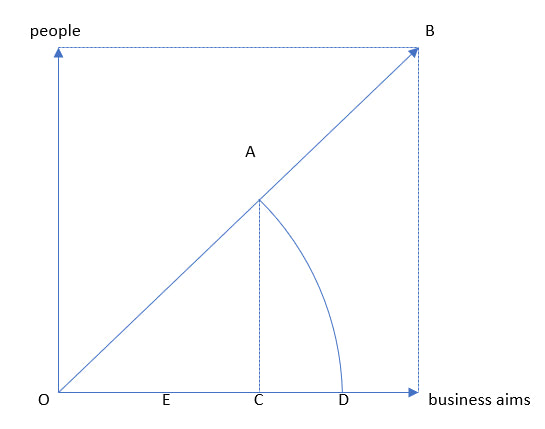Working with your staff, not on them
Mrs Roberts had the measure of me from the start. ‘Christopher is a bright button but somehow always towards the bottom of the tin.’
Always been slow on the uptake. Despite that I do sometimes buck the trend and see straight through to the right answer.
One such moment occurred at a conference we’d organised when an Ofsted inspector gave me advice on how to make my college outstanding.
Now the highroad to mediocrity is clichéd thinking and our – OK, my – planning had been slipshod in one key respect.
The purpose of the conference was to motivate staff to improve the quality of learning.
So who should we get to do the key-note address at the start?
An Ofsted inspector was the obvious choice, so obvious I didn’t stop to think.
We were planning a staff conference on quality improvement so who did I invite? An expert on quality assessment. Duh.
This mistake became clear as an alarm bell over coffee.
‘Thing is, Chris,’ said the inspector conspiratorially, ‘all you need do is ask every teacher to ensure that one student per class passes who would otherwise fail.
Replicate that across the curriculum and your value-added will be outstanding.’
I nodded sagely but – for once – knew instantly he was wrong.
I could just see it. I call a staff meeting, announce the simple recipe for an outstanding Ofsted grade and quick as a flash, up goes a hand.
‘Can you tell us which student in each class we need to focus on?’
And with that question I’m skewered.
Either I give what we all know is the honest answer, the very short one, ‘No’, or I praise staff’s expertise and understanding of their students and talk about my confidence that they’ll know the answer.
To teachers’ ears this is just a long way of still saying ‘No’ but with the added gall of implying it’s totally their responsibility and nothing whatever to do with me, the college principal.
I’m sure the inspector’s understanding of the college data was faultless. I trusted him completely that our value-added would be outstanding if we could do as he suggested.
But I knew immediately his suggestion wouldn’t work because it failed to take account of our staff.
Quality improvement – like any strategy – always involves two dimensions not one:
- working on the business aims and
- working with the people who’ll deliver them.
In the diagram below the
- y axis represents a management strategy solely focused on improving the well-being of the staff and the
- x axis a strategy exclusively targeted at achieving the business objectives.
My Ofsted friend’s well-intentioned advice implied a belief that we could focus on the business aims and move from O to D with one simple intervention.
I was convinced if we tried it we’d wind up somewhere around E because staff would resist it.
By taking into account staff concerns about how our quality strategy might affect them I was convinced we’d make better progress (moving from O to A).
This would fall short of what the inspector thought possible (represented by the gap C to D) but it would be achievable.
As it turned out, by always taking both dimensions into account – working along the line O – B – we achieved outstanding grades from Ofsted.

But we’ll never know whether the inspector was right. Maybe we could have got there quicker his way?
So here’s a question for you.
During an Ofsted inspection of her college a colleague principal picked up some advice from one of the inspectors: bring in unannounced lesson observations.
With no warning to the teacher, management would be far more likely to see what the everyday standard of teaching was actually like. No dressing up for the occasion.
Now what do you think she did?
And what would you have done?
Chris Thomson, Education Consultant and former sixth form college principal.











Responses